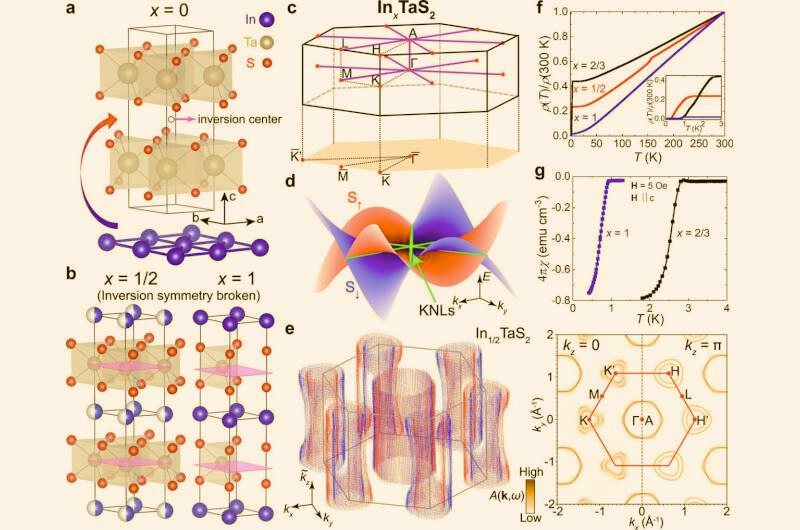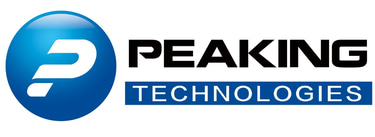The Rise of Kramers Nodal-Line Metals: A New Frontier for Electronics Companies
Discover how Rice University’s breakthrough in Kramers nodal-line metals—combining superconductivity and topological spin behavior—could revolutionize electronics, from zero-loss power systems to quantum computing. A must-read for forward-thinking electronics companies.
JoeZ
6/9/20253 min read


In the rapidly evolving world of materials science, the discovery of new quantum materials often leads to paradigm-shifting innovations across the electronics industry. The recent breakthrough by researchers at Rice University in developing a Kramers nodal-line metal marks one such pivotal moment. For electronics companies, from startups to multinationals, this innovation holds significant promise—especially in energy-efficient, next-generation devices and quantum computing systems.
What Is a Kramers Nodal-Line Metal?
To appreciate the impact of this new material, it’s essential to understand its scientific foundation. A Kramers nodal-line metal is a type of quantum material where the electronic energy bands for spin-up and spin-down electrons form continuous crossings in the shape of lines—rather than isolated points—in momentum space. These nodal lines are protected by the underlying crystal symmetries of the material.
Traditionally, such exotic electronic behaviors are found in highly controlled, theoretical systems. However, the Rice University team—led by physicists Ming Yi and Emilia Morosan—has succeeded in engineering a real-world material that exhibits this behavior. By intercalating a small amount of indium into tantalum disulfide (TaS₂), they manipulated the crystal symmetry in such a way that these nodal-line features emerged, along with an unexpected and highly desirable property: superconductivity.
How Was the Material Developed?
The synthesis of this super-material involved a precise, minimal doping of indium into TaS₂. This subtle alteration breaks specific symmetries in the crystal lattice while preserving others in a way that enforces nodal-line crossings in the material's electronic band structure. This development relied on a synergy of experimental and theoretical approaches:
Angle-Resolved Photoemission Spectroscopy (ARPES), including spin-resolved measurements, was used to directly observe the band structure and verify spin-dependent electronic behavior.
Transport measurements under varying magnetic fields confirmed the emergence of superconductivity.
First-principles theoretical modeling corroborated the experimental data, showing that the observed effects result from deliberate symmetry engineering.
This is not just a proof-of-concept. It’s a functioning material with real properties that can be measured, manipulated, and potentially deployed in devices.
Why This Matters for Electronics Companies
1. Energy Efficiency at a New Level
The superconducting nature of the material means that it can conduct electricity without resistance. For electronics manufacturers, this represents an opportunity to design circuits and systems that experience zero energy loss—particularly useful in data centers, electric power grids, and high-frequency communications.
2. Topological Superconductivity
This new material isn’t just superconducting; it may also serve as a platform for topological superconductivity—a phenomenon that can host exotic quasiparticles such as Majorana fermions. These are critical to the development of fault-tolerant quantum computers. Electronics companies looking to invest in the quantum future should closely watch, and potentially partner with, developments around this material.
3. Next-Gen Spintronics
Spintronics, a field that exploits electron spin in addition to charge, can benefit from the nodal-line properties of the new material. Since spin-up and spin-down channels travel separately and are protected by crystal symmetry, devices can potentially achieve greater control over spin currents, enabling faster and more secure memory and logic operations.
4. Material Platform for Device Prototyping
Because the Kramers nodal-line behavior is tied to symmetry—something that can be engineered and tuned—it opens the door to a family of materials with similar properties. Electronics firms can explore variations in doping, layering, or stacking with other 2D materials to create customized functionality for sensors, detectors, and ultra-fast transistors.


Comparing with Other Topological Materials
The field of topological materials is rich with promise—graphene, stanene, germanene, and various altermagnets all come to mind. Yet, most of these either don’t conduct electricity in the superconducting regime or lack spin-resolved tunability. What sets the Rice University discovery apart is the combination of:
Symmetry-protected nodal-line conduction
Measurable and tunable superconductivity
Potential for spin-resolved device operation
This makes it a more comprehensive platform than many existing topological materials.
Challenges and Next Steps
Despite the excitement, integrating this material into commercial products won’t be immediate. Electronics companies should consider the following steps:
Material Stability: Investigate thermal and chemical stability in device-relevant environments.
Scalability: Determine whether the material can be produced in bulk or thin-film formats suitable for industrial fabrication.
Device Engineering: Develop prototype devices—transistors, memory cells, or superconducting qubits—that leverage the material’s unique properties.
Partnerships: Collaborate with academic institutions or advanced research labs for co-development and characterization.
Conclusion
The creation of a Kramers nodal-line metal that also exhibits superconductivity is a landmark achievement. It represents not just a scientific curiosity, but a real-world platform that can transform electronics, computing, and energy systems. Electronics companies that act now—by researching, prototyping, and investing in this material—stand to gain a significant edge in what is sure to be the next wave of advanced technology.
This is a moment where science fiction begins to meet industrial reality. The next question is: Who will be first to capitalize on it?
